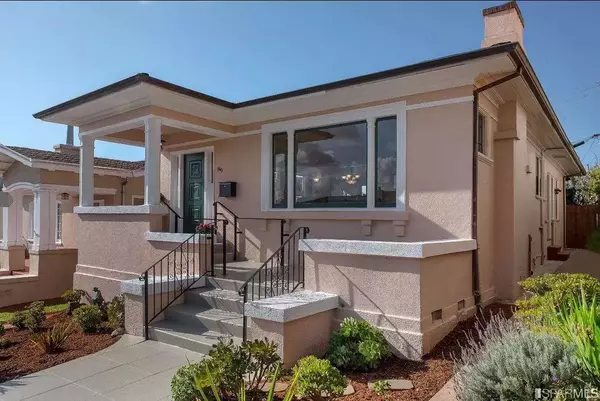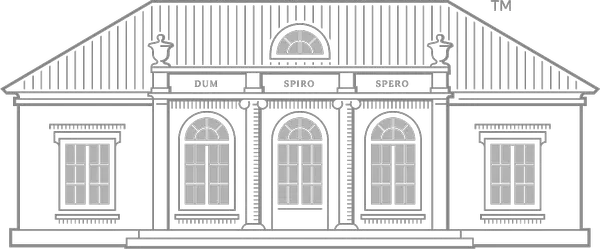
The Fed Cut Rates—Was That The Mortgage Rate?
In the wake of the Federal Reserve’s recent decision to cut interest rates, many potential homebuyers and real estate enthusiasts are buzzing with excitement. The common perception is that a reduction in the federal funds rate directly translates to lower mortgage rates, making homeownership more accessible. However, it’s essential to delve deeper into this topic because it’s not what you think. Understanding the Fed's Rate Cuts During its September meeting last week, the Federal Reserve reduced the federal fund rate by 50 basis points. This was the first rate drop by The Fed since 2020, which is welcome news for consumers, homeowners and prospective home buyers, but it DOES NOT mean mortgage interest rates came down by half a point. The “fed rate” is the rate banks use to lend each other money, not the rate they use to lend us money. It’s true that when the fed rate goes up and down, the rates offered to us consumers also goes up and down on everything from credit cards, car loans and yes, even mortgages. But, the fed rate is NOT the same thing as the rate we pay for a mortgage. So, even though the fed cut its rate by 50 basis points, that doesn’t mean mortgages go down by the same amount right after this decision. What It Means For Mortgage Rates Just like the stock market, mortgage rates can go up and down every day, even if the fed rate remains the same. That’s why even though the fed hasn’t dropped their interest rate since 2020, interest rates on mortgages have been moving up and down since then. In fact, mortgage lenders already planned on The Fed cutting their interest rate and interest rates on mortgages started dropping months ago and dropped even further the week prior to their decision. The interest rate you pay on a mortgage depends on so many factors. Yes, what the Federal Reserve’s rate is does have an impact, but so does everything from what type of home you are buying, where it’s located, how much you putting down, your credit score, and many other factors. If you are thinking of buying a home or refinancing the one you’re in, be in touch. I compare lenders’ rates every day and can connect you with local lenders that have the lowest rates I’ve seen. What This Means For You The fed cutting interest rates will spur buyers and sellers who have been sitting on the sidelines the last few years into action. Buyers: If you’ve been thinking about buying a home, last week’s rate cut may have gotten your attention. Rates are more favorable than they were last year by more than one percentage point. That means what you want to pay per month for a home can go a lot further. It means you can look at home prices you might have been able to afford last year. Rates have been dropping for months and all indications point to this trend continuing. You might be thinking you’ll wait for rates to bottom out before you start looking for a home, but that’s not necessarily the best plan. Lower rates means more buyers will likely be out looking, which could mean more competition for the same home. This, in turn, increases prices. The sooner you start looking, the less competition you may encounter and you can always refinance when rates bottom out after finding your perfect home. Sellers: If you’ve been wanting to sell your home, this could be a great time to do so. I often say the fall is not as good to sell as a home as the spring market because we see less motivated buyers this time of year. I think this year will be different on the heels of the fed rate cut and a continued interest rate downward trend. Unlike most years, I am predicting we will see a strong fall selling season with motivated buyers wanting to take advantage of lower rates after sitting on the sidelines last few years. We are seeing more buyers entering the market. They are ready and hungry for a new home. Inventory continues to be low so we are seeing homes sell well for sellers. And, if you’ve been wanting to sell your home, but have been feeling “stuck” because the home you want has been unaffordable, lower rates means you can finally get unstuck by successfully selling your home and being able to afford the one you’ve been hoping for. Homeowners: If you’re wondering whether you should refinance, I would say hold off for now. All signs point to rates continuing to lower over the next few months. I can’t tell the future, but if I was a betting person, I’d place my bet on waiting for rates to lower even more before spending the money to refinance. Remember—even the lenders who say they there is no cost to refinance are getting paid for their time and effort by you somehow. They may roll it into a slightly higher interest rate or your loan amount, but there is always a cost to refinancing. You want to make sure what you pay to refinance is worth the investment. Whenever you decide to refinance, I’m happy to recommend a lender to you, review any proposals you might get from lenders, and even do the math so you know when you’ll break even from a refinance to make sure it’s worth the cost. As you can see there’s a lot to learn when it comes to interest rates. So much so that I’ve written a few other articles about this topic, check out a past article... Date The Rate, Marry The House I hope this information is helpful to you, but I also know the best way I can help is to have a conversation about your particular situation. There is no one right way to buy, sell, or refinance a home. There are tons of options and that is great, but can be overwhelming. I don’t want you to make a mistake or not know about an option that is the best option. That’s why I always encourage my friends, family, and clients to reach out to me long before you are ready to make whatever move you are thinking about making. Contact me anytime for a no obligation, no-pressure conversation. I’m looking forward to hearing from you and learning how I can help create the best scenario for YOU. As always, I’m your go-to resource for all things real estate, even if you aren’t buying or selling anytime soon. Sincerely, Courtney King, Real Estate Advisor since 1995

"Date The Rate" and "Marry The House"?
Date The Rate and Marry The House: A Guide for Buyers and Sellers What does it mean to “date the rate, marry the house?” In the ever-evolving world of real estate, two factors play a crucial role in decision-making for both buyers and sellers: interest rates and timing. Today, we will explore the importance of these factors and provide valuable insights for those looking to navigate the market successfully. For buyers, the current higher-interest-rate environment offers a unique opportunity to "Date The Rate" and secure a home now. However, it's essential to consider the possibility of refinancing later. With interest rates projected to decrease, locking in a home now and refinancing when rates decrease might be a smart move. It's crucial to consult with a mortgage professional who can guide you through this process and help you make an informed decision. When you find a house that you fall in love with, you shouldn’t hesitate to “put a ring on it.” When you refinance a mortgage, it’s kind of like breaking up with your rate and getting a new, better rate. A refinance (or “refi” as it is commonly referred to) is simply a way to replace your original mortgage agreement with a new contract that contains updated terms and rates that are more attractive. That means if rates come down since you closed on your initial mortgage, you can refi into a lower rate and potentially pay less each month. It is important to do the cost/benefit analysis. The break-even point is the point in time when you recoup the costs you had to pay to obtain the refinance. It’s typically a couple years down the road, but if it’s too many years into the future, then you may not make your money back before you decide to sell your home or pay off your loan. So, as an example, if you save $100 a month with a new mortgage, but it will cost you $3,000 in closing costs, your break even point will be in 30 months. On the other hand, sellers can take advantage of the current market conditions with low inventory and entice buyers to "Marry The House" by avoiding the buying rush. By listing your property when there is less competition, you increase the chances of securing a higher selling price. Additionally, motivated buyers looking to take advantage of low rates are more likely to make competitive offers, benefitting sellers in the long run. While interest rates fluctuate, the question often asked is, "When will the rates change?" Unfortunately, predicting interest rate movements is challenging. However, experts suggest that rates may start to decrease gradually in the near future. Therefore, it's essential to be ready and get pre-qualified now. Another common query is, "When should I buy?" The answer depends on various factors, such as personal circumstances and market conditions. It may cost you money to wait for the rates to go down. With lower inventory, prices are standing strong. Often sellers are willing to help buyers "buy down" the interest rate to help you save money until you can refinance for a lower rate. Mortgage rates are hard to predict and can rise and fall over the years. It’s important to know that you’ll be able to afford your mortgage payments when you buy the home, then wait for the right mortgage rate to come along to improve your situation. In conclusion, both buyers and sellers have a unique opportunity in today's real estate market. Buyers can "Date The Rate" by taking advantage of finding a home when their is less competition and considering future refinancing opportunities. Sellers can list their property during a less competitive period and attracting motivated buyers. Remember, the market is ever-changing, and timing is crucial. So, consult with experts, closely monitor interest rate trends, and make informed decisions to ensure a successful real estate journey. Now is the time to seize the opportunity and create a prosperous future in the real estate market. So, whether you're a buyer or a seller, embrace the chance to realize your real estate dreams and navigate the market with confidence. www.thebozeman411.com Photo by Vija Rindo Pratama from Pexels: https://www.pexels.com/photo/man-holding-baby-s-breath-flower-in-front-of-woman-standing-near-marble-wall-935789/

The Top Things To Do To Prepare Your Home For Sale
I was at a home inspection walk-through this past week with my buyer. Quite a few items came up in the inspection that I see fairly regularly. It can be pretty overwhelming for a seller to receive such an extensive list and a little scary for a buyer who is spending half a million dollars on a first home to think of all of the things that can go wrong in a house. I came up with a few items to consider when you are going to be selling your home to help this situation become more manageable. Or just do them to protect your investment and enjoy it more! 1. Consider offering a home warranty. Appliances and working components of the home just are not made like they used to be. I already had to replace the wheels in my 1-year-old dishwasher. If you have lived in your home for many years, the furnace and water heater are likely at the end of their age. A home warranty protects the Murphy that inevitably comes into the home right after it closes and breaks those items; however, there is no need to replace them until they truly are done. 2. Gutter Extensions Home inspectors always note that gutters need those inexpensive extensions that you can get from the hardware store to move water away from the foundation. 3. Gas Line Paint the gas line at the meter. Place a piece of cardboard behind the pipe to protect the siding from overspray and use a $3 can of spraypaint to seal the pipe from rust. 4. Dryer Vent Clean out your dryer vent regularly. Build up of lint plus heat from the dryer is a fire hazard. 5. Corrosion Check your home for corrosion. Water heaters get a buildup on top as well as faucets. Take a wire brush and remove it or use vinegar to soak the faucet and aerator. 6. Exhaust Fan The exhaust fan over the stove has a screen filter that you can just throw in the dishwasher. 7. Filter Change your filters in the furnace regularly. This can also make your heat stop working when it's negative temperatures according to the heat techs that were called out to numerous homes when it was -35 this winter. 8. Bathroom Fans Many of them are not vented outside in the attic. See if you can look up in your attic to make sure yours is venting outside and not into the insulation in the attic. This can be very costly to mitigate the mold that is caused from it venting into the attic. 9. Drainage Every summer check all the way around your house for negative drainage. This means that dirt slopes away from the house and prevents water from going into your crawlspace/basement. Just add dirt around the perimeter to build it back up. It packs down after snowy winters or rainy springs wash it away. 10. Leaks Check your basement/crawlspace, under sinks, and around toilets for slow leaks. This can be another costly item that grows mold over time. If you have items that you have been meaning to fix, just fix them or start a savings account to have as a fix-it fund. They will come up in an inspection and you may have to fix them then which only gives you 2 weeks to 20 days to get someone scheduled and the part in stock. Save yourself the hassle and fix it as soon as you can. Courtney King has been a Realtor in Bozeman since 1995. She enjoys being an advisor of all things Montana whether it's selling your home, helping you buy a property or simply making a recommendation of something or someone you need. Feel free to reach out to her anytime.


